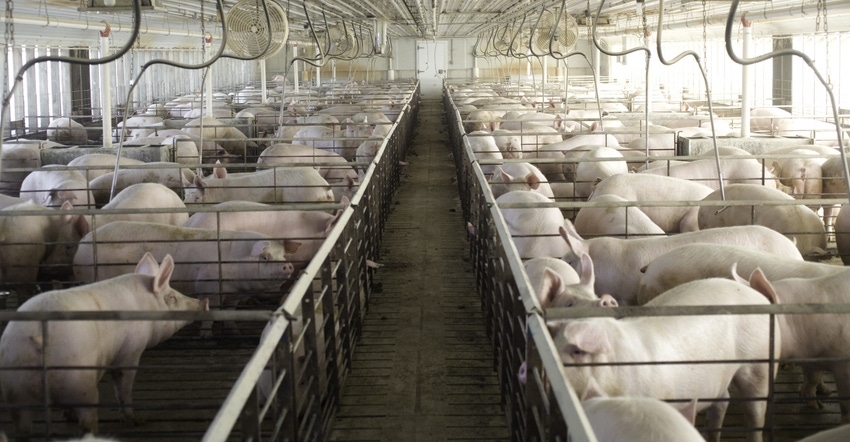New challenges include local labor market shortages and declining flow of immigrants into rural labor markets.

The agriculture industry in general, and particularly the hog industry, has changed dramatically in recent decades, from an industry largely utilizing family labor to an increasingly capital-intensive, technology- and science-driven sector with a significant demand for hired full-time skilled and unskilled workers. This has brought about challenges in finding an adequate workforce, according to a new study commissioned by the National Pork Producers Council (NPPC).
In 2012, hog and pig farmers in the U.S. spent more than $837 million on hired labor, a 12% increase from the previous "Census of Agriculture" in 2007. The labor expense was even greater, at $1.2 billion -- a 19% increase -- when contract and custom labor was included. Nearly 38% of hog and pig farms reported having hired labor in 2012, and the average hired labor expense per farm was $102,000 -- increases of 28% and 23%, respectively, since 2007. Almost 1,400 farms reported having a hired labor expense of more than $100,000 in 2012.
From 2001 to 2015, employment in the swine industry grew at an annual rate of 2.1% -- three times faster than employment growth in all U.S. industries. “Even during the worst recession since the 1930s, the hog industry created jobs. Total and weekly wages in hog production jobs have also grown significantly faster than the average of all U.S. industries over this 15-year span,” according to the NPPC study.
In top hog-producing states, unemployment rates hover near 4%, and most economists consider 4% “full employment.”
Hiring dependable employees in the local labor market has its challenges. The biggest challenge with native-born local workers was work schedules that require work on weekends and holidays, more so than the physical demands of the job.
The most threatening trend facing hog production firms in the longer term are the demographic realities in the non-metropolitan counties where these firms overwhelmingly are located. Out-migration and deaths have significantly outpaced births and in-migration. “The aging rural workforce that remains is increasingly unable and unwilling to do the strenuous labor that agricultural work demands,” the study found.
“From 2007 to 2017, the rural labor force shrank in seven of the eight largest hog-producing states,” the study report said.
'Brain drain' effect
Pork production firms are finding it more challenging to hire both unskilled workers as well as skilled workers with higher education levels.
“Changes in technology and production practices in swine production increasingly require that workers have advanced education and training beyond high school. Rural areas of the United States have been experiencing out-migration of young, educated adults, or ‘brain drain,’ for a long time,” the report notes.
Changes in farm-specific procedures, auditing, Pork Quality Assurance, antibiotic use guidelines and other regulations and protocols have created strong demand for employees with higher levels of education and training.
Foreign workers
Given a tight labor market, particularly in rural areas, the loss of foreign-born workers would lead to a decrease in agricultural jobs, the study found.
Economists with Iowa State University, using a study from the U.S. Department of Agriculture’s Economic Research Service, determined that a reduction in the foreign-born workforce – prompted by a change in immigration policy – would not be offset by native-born workers and permanent residents. Instead, they found, the tighter supply of foreign-born workers would reduce overall demand for workers as production costs increased and would decrease agricultural output as farmers abandoned labor-intensive operations.
The result would be a 3.4-5.5% decrease in the total number of farm workers.
“The U.S. pork industry needs access to a legal and productive workforce, and skilled and unskilled foreign workers have been crucial to maintaining and growing the workforce and revitalizing rural communities across the United States,” said NPPC president Jim Heimerl, a pork producer from Johnstown, Ohio. "We need more of them, not less.”
NPPC is supporting congressional legislation that would create a new visa that allows non-seasonal foreign agricultural workers to remain in the U.S. for up to three years while deferring a portion of their pay as incentive for periodic “touchbacks” to their country. This H-2C visa would replace the current H-2A temporary, seasonal agricultural worker program. The legislation initially would let agricultural employers hire up to 410,000 foreign workers for on-farm jobs and 40,000 for meat packing plants. It also would put the H-2C program under USDA's authority rather than the U.S. Department of Labor.
“If we don’t address the current labor shortage or it gets exacerbated, we could see animal health and well-being suffer and agricultural facilities shutting down, causing severe financial harm for farmers and ranchers and to rural communities,” Heimerl said.
About the Author(s)
You May Also Like




.png?width=300&auto=webp&quality=80&disable=upscale)
